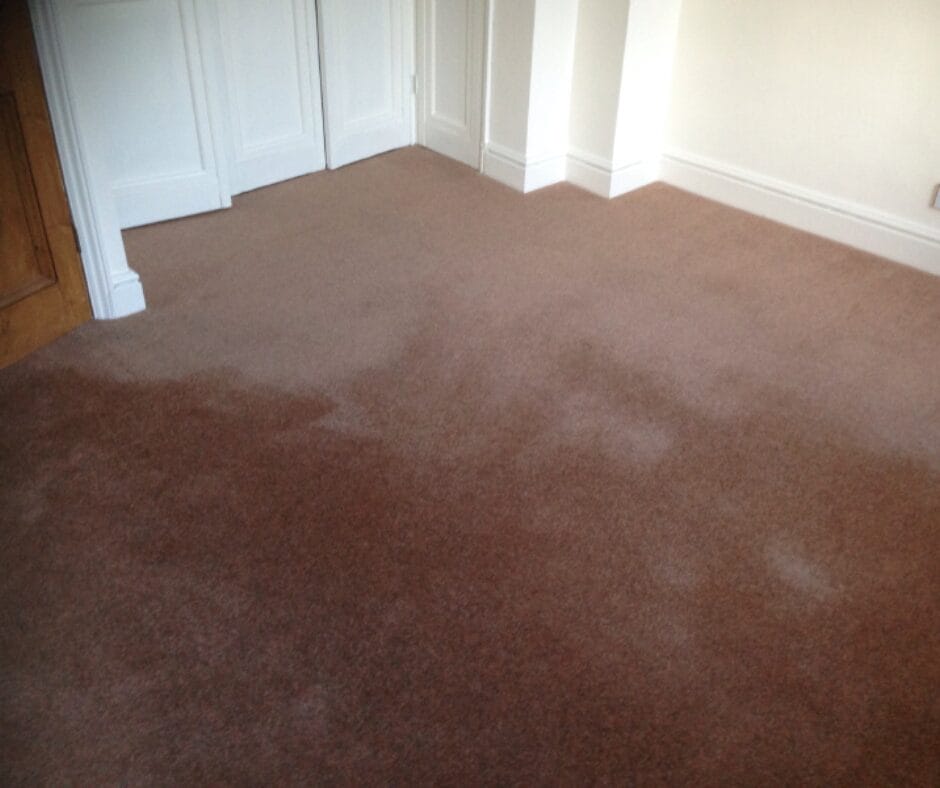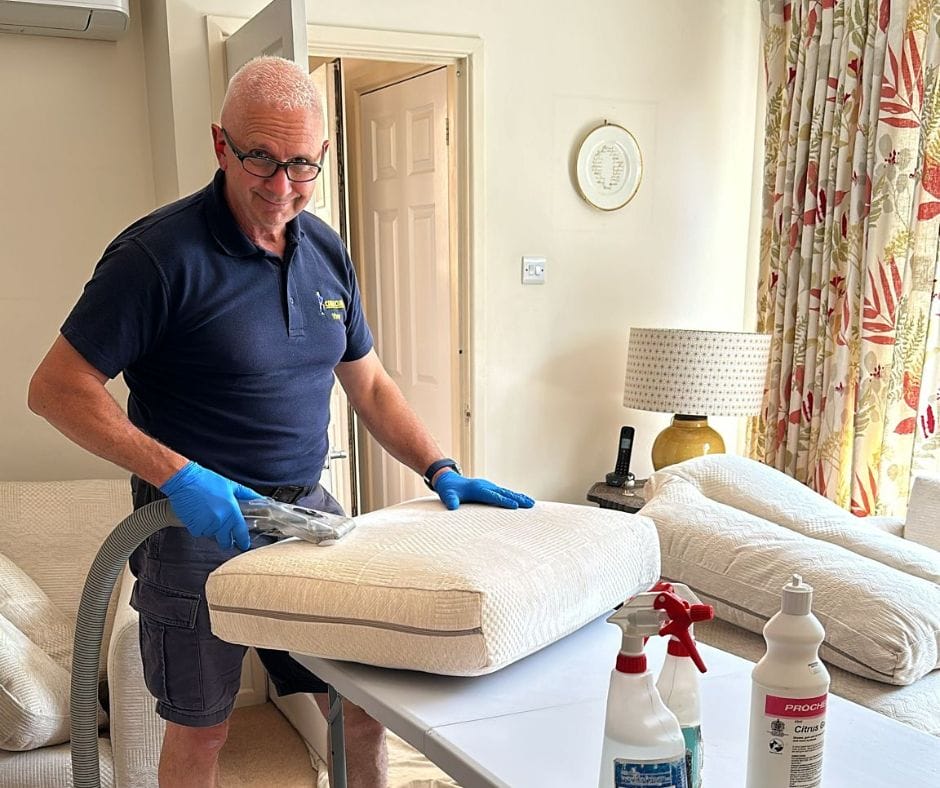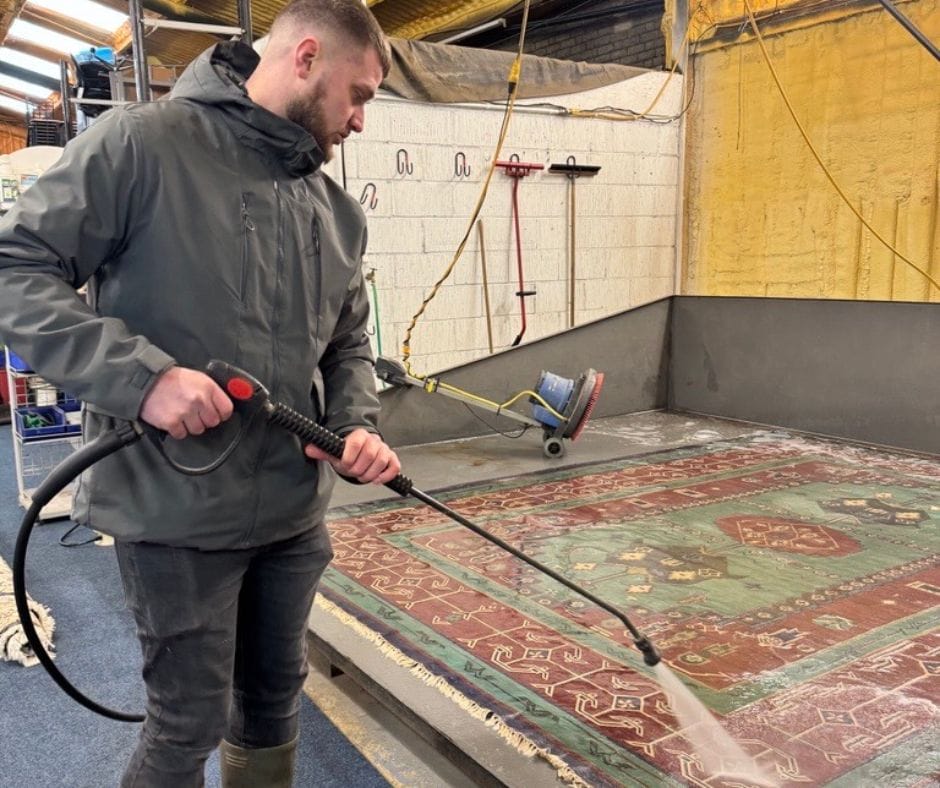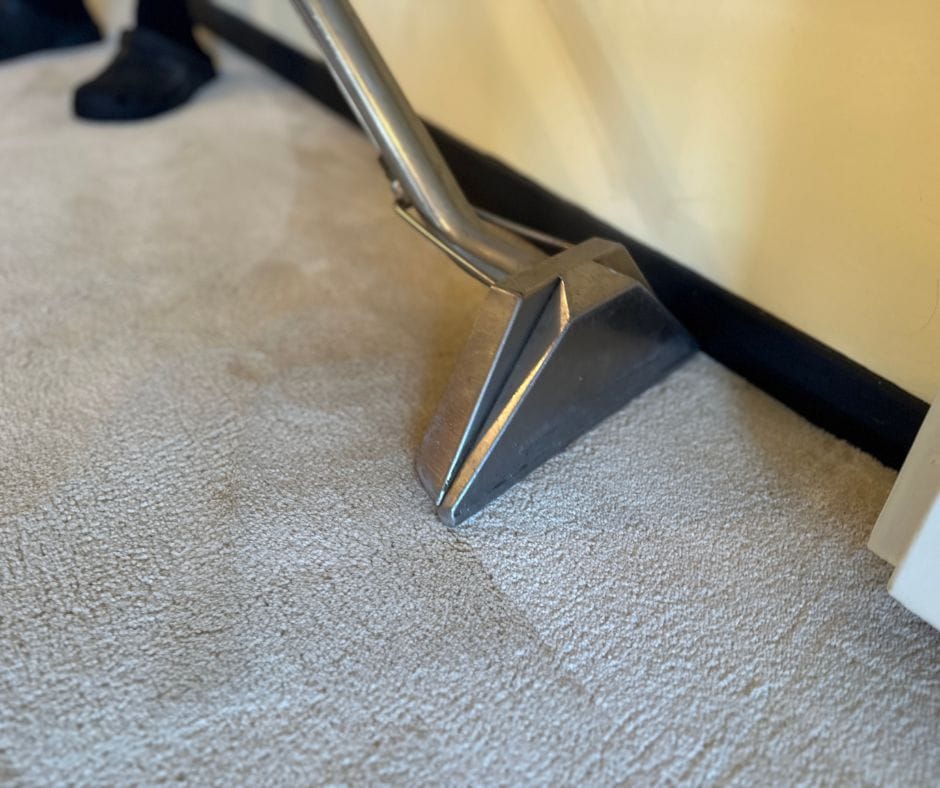Ian and Sue have lived in their Essex home for over 20 years. Their well-loved carpets hadn’t been cleaned in more than 12 years, so Sue decided it was time for a refresh. After speaking with several companies, they chose one that offered a home visit for a quote. However, the visit was rushed due to an overlapping dentist appointment, leaving little time for a thorough assessment.
Two weeks later, Garry from the carpet cleaning company arrived. By the afternoon, the carpets looked clean and smelled fresh. However, Sue noticed some strange marks in the master and guest bedrooms – spots that appeared darker than the surrounding carpet.
Their old golden retriever, Dexter, was a big fan of the living room carpet, creating well-worn paths that only Sue noticed after the cleaning.
She hoped the marks would improve as the carpets dried, but three days later, they were still visible.
A Visit to Sarah: A New Perspective
Curious about the marks, Sue visited her friend Sarah, who also has carpets. Sarah mentioned that she had never seen anything like those marks in her home. This made Sue wonder—why was her carpet affected but not Sarah’s?
The difference lies in the type of carpet. Pile reversal is a phenomenon that occurs only in cut-pile carpets, not loop-pile carpets. Cut-pile carpets have exposed fibre ends, making them more susceptible to changes in direction due to foot traffic, furniture movement, or even slight variations in carpet installation. This can lead to areas where the fibres bend in different directions, creating the light and dark patches that Sue noticed.
In contrast, loop-pile carpets, like those in Sarah’s home, have fibres that remain looped. This design makes loop-pile carpets more resistant to changes in fibre direction, meaning they are far less likely to show the characteristic shading or pooling marks seen in Sue’s cut-pile carpets. Loop-pile carpets tend to maintain a more uniform appearance over time, making them a popular choice for high-traffic areas.
What Is Carpet Pile Reversal?
Pile reversal, or shading, occurs when the fibres of a cut-pile carpet shift direction, altering how light reflects off the surface. This creates lighter or darker patches that can resemble watermarks or subtle shadows across the carpet. It’s not a defect but a natural characteristic, especially in high-quality, plush carpets like those Ian selected for their home.
While pile reversal is more common in densely packed, luxurious carpets, it can happen to any cut-pile carpet over time with enough foot traffic. The phenomenon can seem random—appearing more prominently in high-traffic areas like hallways and living rooms but occasionally showing up in less-used rooms as well.
Why Didn’t Sue Notice It Before?
1. Dirt Masked It: Over the years, built-up soil and dust can obscure subtle changes in the carpet’s appearance. When the dirt is removed, the actual condition of the fibres becomes more apparent.
2. Closer Inspection: After a deep clean, homeowners naturally pay closer attention to their carpets, noticing details they might have overlooked before. With a cleaner and fresher look, Sue’s focus shifted to every part of her carpet.
3. Lighting Changes: Cleaned carpets reflect light differently, making any variations in fibre direction more visible. Adjustments in lighting, especially with the removal of furniture or changes in how light enters a room, can further emphasise these effects.
What Garry the Carpet Cleaner Could Have Done Better
Reflecting on Sue and Ian’s experience, there are a few things Garry could have done to improve the process:
Take More Time for the Quote: Given the rushed nature of the first visit, Garry could have suggested rescheduling to allow for a more thorough inspection. This would have helped identify potential concerns like pile reversal.
Follow-up with Detailed Information: If Garry noticed signs of pile reversal but didn’t have time to discuss them during the visit, a follow-up email with more information could have been helpful. This would ensure that Sue and Ian were better informed before the cleaning.
Acknowledge Challenges in Spotting Pile Reversal: Pile reversal can be hard to spot, even by a trained eye, especially if hidden under rugs, on furniture, or in rooms with dim lighting. Garry could have noticed it during cleaning and could have pointed it out then.
Provide Educational Resources: Having articles on his website about common issues like pile reversal and sharing them with clients when concerns arise could help Garry build trust and transparency.
Can It Be Fixed?
Garry explained that while professional cleaning can refresh a carpet’s appearance, it cannot reverse the direction of the fibres in areas affected by pile reversal. Techniques like grooming the carpet or using specialised brushes can temporarily enhance its appearance by aligning the fibres more uniformly. However, the fibres will often revert to their natural state over time.
Homeowners must understand that pile reversal is a natural occurrence and not a sign of poor-quality carpet. Though inconvenient, it’s simply part of the unique character that can develop in cut-pile carpets over time.
What Homeowners Can Do
- Regular Maintenance: Keep carpets clean with regular vacuuming and periodic professional cleaning to prevent soil buildup, which can obscure natural changes in the carpet.
- Use Area Rugs: Protect high-traffic zones with rugs or runners to reduce wear and minimise areas prone to pile reversal.
- Choose Loop Pike Carpets if required. Loop pile carpets are much less likely to shop Pile reversal marks.
- Get Professional Advice: A thorough consultation with Careclean Essex can help homeowners understand the nature of the marks and determine the best care methods for their carpets.
How Careclean Essex Can Help
At Careclean Essex, we’re dedicated to helping homeowners like Ian and Sue get the most out of their carpets. We can assess your carpets, explain concerns like pile reversal, and recommend the best care plan to maintain their appearance and feel. We believe in providing honest advice so you know exactly what to expect.
Embrace the Natural Changes
While pile reversal can be surprising, it is a natural part of owning quality cut pile carpets. With the proper care, professional guidance, and realistic expectations, you can keep your carpets looking beautiful for many more years. If you have questions or need help with your carpets, reach out to us for assistance!





